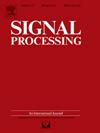快速和增强稀疏选择的尾部ℓ2 最小化分析
IF 3.6
2区 工程技术
Q2 ENGINEERING, ELECTRICAL & ELECTRONIC
引用次数: 0
摘要
我们研究了迭代尾ℓ2 最小化(tail-ℓ2-min)技术在稀疏选择能力方面的有效性和效率。我们对尾-ℓ2-min 进行了剖面分析,建立了尾-ℓ2-min 问题与两阶段剖面 ℓ2 表述的等价性,两者都具有分析解。研究表明,传感矩阵 A 的尾部无效空间特性(NSP)等同于新定义的剖面矩阵 Ã 的 NSP。除了在典型的尾部 NSP 条件下对尾部-ℓ2-min 进行误差约束分析外,还建立了尾部-ℓ2-min 公式的新误差约束,而无需依赖 NSP 或受限等距特性(RIP)假设。它仅仅包含了可处理的 A 系数,并通过观察收敛迭代过程提供了成功恢复的见解。数值研究和在图像重建中的应用证明了尾ℓ2 稀疏解比最先进的稀疏选择方法更优越、收敛更快。尾-ℓ2剖面算法所能保证恢复的信号稀疏程度比基追求算法高出约41%。尾ℓ2 方法每次迭代的分析解也确保了尾ℓ2 稀疏恢复过程的速度,尤其是在高维和高稀疏度情况下。本文章由计算机程序翻译,如有差异,请以英文原文为准。
Analyses of the tail-ℓ2 minimization for fast and enhanced sparse selections
We investigate the effectiveness and efficiency of the iterative tail- minimization (tail--min) technique for its sparse selection capabilities. We conduct profile analyses on the tail--min, establishing the equivalence of the tail--min problem to a two-stage profile formulation, both featuring analytical solutions. The tail null space property (NSP) of sensing matrix is shown to be equivalent to the NSP of the newly defined profile matrix . Besides the error bound analysis for the tail--min under the typical tail-NSP condition, a novel error bound of the tail--min formulation is also established without relying on NSP or restricted isometry property (RIP) assumptions. It merely contains tractable coefficients of , and offers insights into successful recovery, with the observation of the convergent iterative procedure. Numerical studies and the applications to image reconstruction demonstrate the superiority and fast convergence of the tail- sparse solution over state-of-the-art sparse selection methodologies. The sparsity level of a signal that the tail- profile algorithm guarantees the recovery is around 41% higher than that of the basis pursuit algorithm. The analytical solutions of the tail- method at each iteration also ensure that the tail- sparse recovery process is notably fast, especially for high dimensions and high sparsity levels.
求助全文
通过发布文献求助,成功后即可免费获取论文全文。
去求助
来源期刊

Signal Processing
工程技术-工程:电子与电气
CiteScore
9.20
自引率
9.10%
发文量
309
审稿时长
41 days
期刊介绍:
Signal Processing incorporates all aspects of the theory and practice of signal processing. It features original research work, tutorial and review articles, and accounts of practical developments. It is intended for a rapid dissemination of knowledge and experience to engineers and scientists working in the research, development or practical application of signal processing.
Subject areas covered by the journal include: Signal Theory; Stochastic Processes; Detection and Estimation; Spectral Analysis; Filtering; Signal Processing Systems; Software Developments; Image Processing; Pattern Recognition; Optical Signal Processing; Digital Signal Processing; Multi-dimensional Signal Processing; Communication Signal Processing; Biomedical Signal Processing; Geophysical and Astrophysical Signal Processing; Earth Resources Signal Processing; Acoustic and Vibration Signal Processing; Data Processing; Remote Sensing; Signal Processing Technology; Radar Signal Processing; Sonar Signal Processing; Industrial Applications; New Applications.
 求助内容:
求助内容: 应助结果提醒方式:
应助结果提醒方式:


